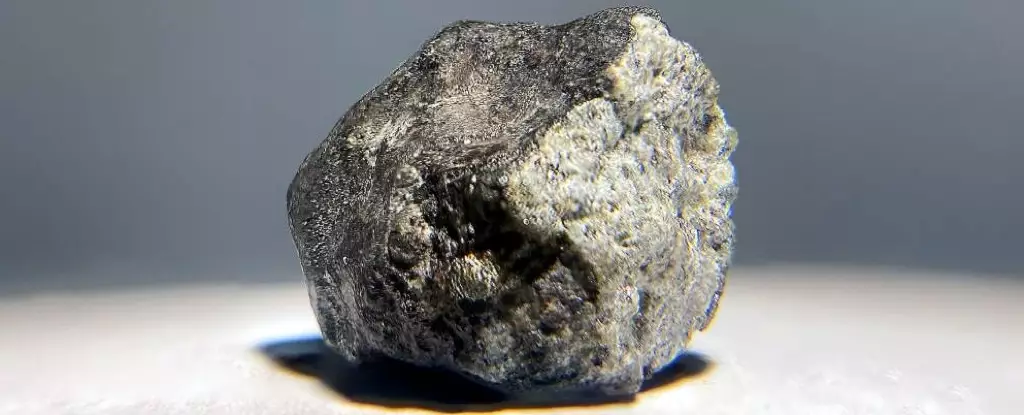For centuries, meteorites have evoked curiosity and wonder as they grace our planet’s surface, remnants of a cosmic tale spanning millions of years. Until recently, only a small fraction of these celestial visitors could be confidently traced back to their origins in the vastness of space. However, groundbreaking studies led by a consortium of researchers have made significant strides in unveiling the origin stories of over 90 percent of the meteorites we encounter today. This newfound knowledge not only enhances our understanding of these enigmatic fragments but also offers insights into the historical dynamics of our Solar System.
The recent studies focused primarily on two prevalent types of meteorites: high iron (H) and low iron (L) chondrites, which collectively account for around 70 percent of all meteor meteoritic falls. These meteorites are distinguished by their unique make-up of small particles known as chondrules, which are formed when molten rock cools rapidly. By analyzing these meteorites’ compositions and cosmic-ray exposure durations, researchers were able to demonstrate that many share a common lineage from particular asteroid families in the main asteroid belt located between Mars and Jupiter.
The asteroids Massalia, Karin, and Koronis emerged as key sources of these meteorites, each with a distinct history of collisions that birthed smaller fragments. Intriguingly, the study revealed that these asteroid families underwent significant collisions at various pivotal points in their history—most notably, the Massalia family experienced notable impacts approximately 466 million years ago and again about 40 million years ago. The Karin and Koronis families, in turn, had their own significant upheavals approximately 5.8 million and 7.6 million years ago, respectively. This timeline directly correlates with the meteorites observed on Earth today, allowing scientists to establish more concrete connections between these celestial remnants and their origins.
The studies employed a thorough investigative approach, drawing upon multiple pieces of evidence to substantiate their claims. This included the identification of dust bands associated with these asteroid families, the measurement of cosmic-ray exposure ages for H chondrites, and a careful examination of the pre-atmospheric orbits of meteorites that landed on Earth. Such comprehensive methodologies not only bolster the credibility of the findings but also illustrate the intricacies of celestial mechanics at play.
Through these studies, it became apparent that many of the meteorites bombarding Earth originate from a limited number of sources—contradicting earlier assumptions of a diverse and chaotic array of parent asteroids. Additionally, the researchers highlighted how relatively recent collisions have led to an upsurge in the number of fragments becoming available, thus raising the likelihood of them entering Earth’s atmosphere.
In a bid to expand the scope of their research, the teams explored meteorites categorized outside the H and L chondrites. This widened the net of known meteorites to encompass fragments traceable to other asteroid families such as Veritas, Polana, and Eos. Consequently, these efforts not only accounted for the majority of meteorites landing today but also unveiled a captivating tapestry of the Solar System’s evolution over time.
As astronomers continue their investigations, this wealth of new information harbors the potential to redefine our understanding of the Solar System’s history. By charting the paths taken by asteroids and meteorites over time, scientists aim to piece together the complex interplay of collisional dynamics that have shaped our celestial neighborhood.
The revelations from these studies signal a turning point in meteorite research, shaping our understanding of these extraterrestrial fragments. As inquiries proceed, researchers are committed to uncovering even more connection points, ultimately striving to account for every type of meteorite. The quest not only enhances humanity’s grasp of our Solar System’s sophisticated history but also reveals the fascinating processes that continue to sculpt it. The ongoing exploration into the cosmos remains vital, emphasizing the importance of interdisciplinary studies in unraveling the mysteries of our universe.


Leave a Reply